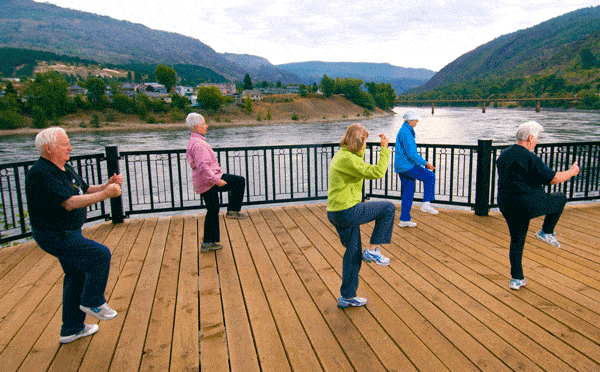According to the 2011 census, seniors (65+ years of age) compose about 15% of British Columbia’s population, and children and youth (0-17 years) compose 19% of the province’s population. Children, youth, and seniors form an important part of every community. They also have unique needs around leisure, accessibility, and health that local governments need to consider.
What is this issue about?
Age-friendly and child-friendly communities, as their names imply, are communities that provide the programs, resources, and infrastructure required for seniors, children, and youth to thrive. Such communities consider the needs of these residents in their community planning and policy work. While some activities and programs may be planned for and appeal to one age, there are benefits for the whole community.
Age-friendly
- According to WHO, “an age-friendly city encourages active ageing by optimizing opportunities for health, participation, and security in order to enhance quality of life as people age.”i
- Age-friendly cities consider seniors’ needs with regard to outdoor spaces and buildings, transportation, housing, social participation, respect and social inclusion, civic participation and employment, communication and information, and community support and health services.
- Through Age-friendly BC, the government of British Columbia is working with local governments and other stakeholders to achieve the vision of a province where people of all ages and abilities feel included and valued in their communities.
Child-friendly
According to UNICEF, “a child friendly city is a city or any local system of governance that is committed to fulfilling children’s rights,” including safety and health, civic development, play and social activities, and equal opportunity rights.ii
Why are age-friendly and child-friendly communities important for health and well-being?
An age-friendly community is important for seniors’ health because it allows seniors to stay active and connected to others, while also “aging in place.” Age-friendly communities reduce travel barriers, allowing seniors to visit friends, exercise, and volunteer, all of which are good for mental and physical health as they reduce depression and heart disease, and increase life expectancy. Age-friendly communities have physical infrastructure that is less likely to cause falls, a major cause of disability among seniors.
A child-friendly community is important for a healthy community because it sets the stage for a good start in life, leading to healthy mental, social, and physical development, as well as healthy lifestyle habits. Child-friendly communities provide opportunities for physically active play and sport through recreation programs and playgrounds, learning opportunities through libraries and community events, and civic engagement and leadership development through municipal processes. Provided early in life, these opportunities allow children and youth to build the confidence, knowledge, and skills they need to thrive as they develop. Simply put, local conditions that support healthy children and youth also support the development of healthy adults and a healthy society overall.
Did You Know?
- In 2011, 16% of B.C.’s population was composed of seniors.iii By 2036, this number is expected to rise to 24%.iv
- In 2011, 45,300 seniors (65+ years old) in B.C. lived in seniors homes, composing 6.6% of the senior population.v
- In 2011, 19.1% of B.C.’s population was composed of children and youth (0-17 years old).vi
- In 2010, B.C. had the second highest child poverty rate in Canada.vii
Why do age-friendliness and child-friendliness matter for local governments?
Local governments have many of the tools necessary to make age-friendly and child-friendly communities a reality. They can consider the needs of seniors, children, and youth and involve them in planning initiatives, programs, and events. Municipal action to create age-friendly and child-friendly communities attracts seniors and families with children to move to and stay in these communities, allowing for healthy lifelong development for all ages and for healthy communities overall.




